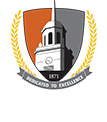Standard of Documentation
The Academic Standards Office reserves the right to take such steps as are deemed necessary to verify the evidence submitted, without providing notification to the student. If the appeal/waiver is not accepted, the committee reserves the right to request the original documents to approve/deny the student's appeal/waiver request.
If there is evidence that a student has fraudulently presented documentation, the Director of Academic Standards reserves the right to consider it under the Academic Misconduct regulations. Additionally, if applying for a waiver, the Financial Aid Office must report suspected fraud cases to the Office of Inspector General (OIG) for further investigation.

Supporting documentation presented by students must meet the following standards:
Written by qualified professionals (independent of the student) with firsthand knowledge of the extenuating circumstance.
A qualified professional is someone who possesses the necessary skills and education, which are demonstrated through licensing, certification, or other professional designations. Examples include:
- A licensed doctor, lawyer, or professional in fields such as psychology, counseling, or social work.
- Faculty or professional staff to attest to an error on the part of the university
The Letter MUST:
- On official letterhead from the institution's office.
- Signed with dates of treatment by the designated professional(s). Supporting documentation presented by email may be acceptable if the author has sent the email from the organization's domain name.
- Confirm that the extenuating circumstances occurred, and it must provide actual date(s) of treatment, not the students' reported dates.
- All supporting documentation must be in the English language. It is the student's responsibility to provide supporting documentation, and any translation should be by an accredited translator (i.e., the International Institute of Buffalo).
Please note: the student may not alter ANY documentation. Documentation amended for any reason will be deemed inadmissible and may be subject to investigation under the Academic Misconduct policy.
Independent official third-party letters(s) must support the student's extenuating circumstances claim.
The burden of proof to support the appeal/waiver always lies with the student.
Supporting Documentation cont'd
Weigal Health Center
Students are advised that the Weigel Health Center and the University Counseling Center will be unable to provide documentation if they have not actively engaged with these services during the relevant semester.
To obtain official documentation that supports an appeal or waiver, students must have sought assistance from these offices during the impacted semester(s) to get the necessary documentation.
For a death in the family, the student must provide:
- A death certificate, or
- Grief counseling documentation, or
- An obituary along with evidence that the deceased person is related to the student, i.e., the student's name is listed in the funeral program.
**NOTE:** For federal Satisfactory Academic Progress (SAP) appeals, only documentation for immediate family members is accepted. Immediate family is defined as parents, legal guardians, children, and siblings. If the appeal is based on the death of an extended family member, the student must provide documentation of counseling received during that time.
File types for attachments
Our online system accepts a variety of file types for uploading documentation. If you upload a document outside of these, it will cause a delay in the processing of your appeal (you will have to resubmit it in the approved types).
- bmp (Bitmap Image File)
- .gif (Graphical Interchange Format File)
- .jpg and .jpeg (JPEG Image)
- .pdf (Portable Document Format file)
- .doc and .docx (Microsoft Word documents)
Apple iOS users: our system does NOT accept HEIC (High-Efficiency Image Format) files. Please convert them to a .jpeg or another accepted file format.
For multimedia users, we do not accept HEIF and HEVC formats.
We DO NOT take any videos, pictures, x-rays, sonograms, or any recordings (audio or visual) as documentation.

